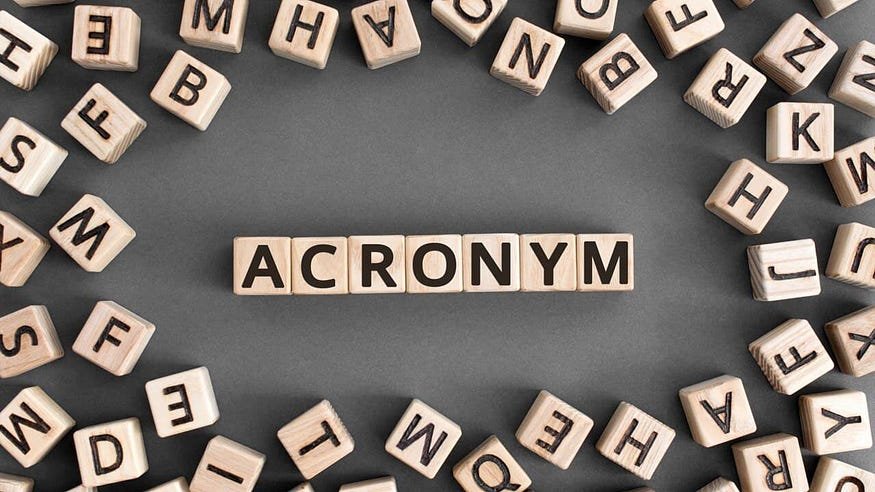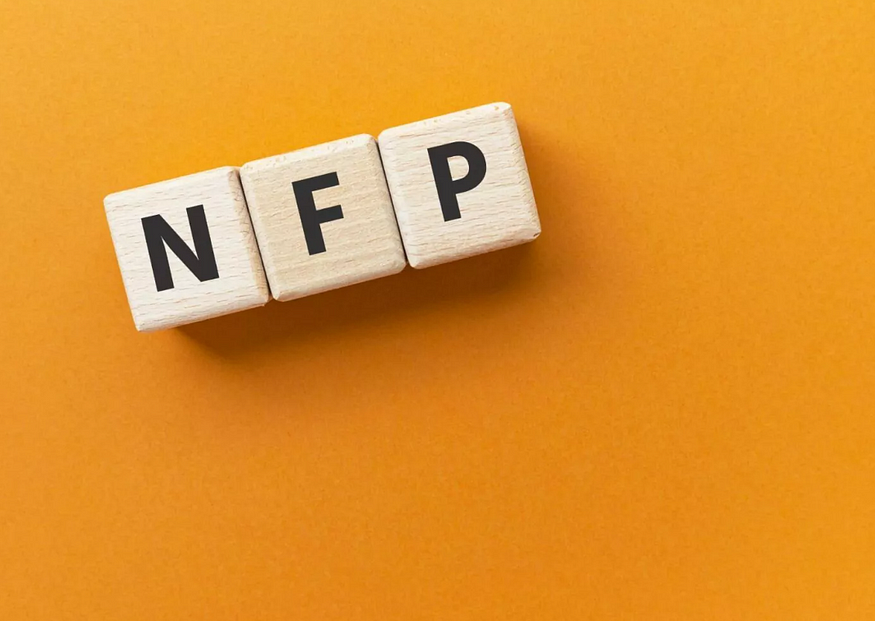Cracking The Code That Will Help You To Communicate Faster Online
Ever feel like you need a translator to keep up with online conversations?
Want a secret weapon to boost your texting and messaging speed? Understanding the code of internet abbreviations is the key!
This guide will help you crack that code, revealing over 100 shortcuts to level up your communication game – no more feeling lost in acronym land!

Abbreviations, Acronyms, and Initialisms
An acronym is made up of parts of the phrase it stands for and is pronounced as a word (ELISA, AIDS, GABA);
An initialism is an acronym that is pronounced as individual letters (DNA, RT-PCR);
An abbreviation is a truncated word.
For the purposes of this article, “abbreviation” will refer to all of these, even if we sometimes use the other two words.
Introduction to Internet Abbreviations
Nowadays communication has become faster and more efficient than ever before.
With the rise of the internet and mobile technology, people have found new ways to express themselves and connect with others. One of the most prominent features of online communication is the use of internet abbreviations.
These short forms and acronyms have revolutionized the way we interact online, allowing us to convey messages quickly and concisely.
In this article, we will explore the world of internet abbreviations, their importance, and how you can use them to impress your friends.
Why Internet Abbreviations are Important
Internet abbreviations have become an integral part of online communication due to several reasons.
Firstly, they save time and effort.
In a fast-paced digital world, we often find ourselves typing messages on the go, and abbreviations help us convey our thoughts with minimal effort. Secondly, they facilitate effective communication.
Internet abbreviations are widely recognized and understood, making it easier for people from different backgrounds and cultures to engage in online conversations.
Lastly, they add a sense of informality and playfulness to our conversations, allowing us to express emotions and convey tone in a more nuanced way.
Commonly Used Internet Abbreviations and Their Meanings
To navigate the vast world of internet abbreviations, it’s essential to familiarize yourself with some of the most commonly used ones. Here are a few examples:
- LOL — Laughing Out Loud: This abbreviation is used to indicate that something is funny or amusing.
- OMG — Oh My God: Used to express surprise or astonishment.
- BRB — Be Right Back: Indicates that the person will be away from the conversation temporarily.
- FYI — For Your Information: Used to provide additional information or context.
- SMH — Shaking My Head: Expresses disappointment or disapproval.
These are just a few examples, but there are hundreds of internet abbreviations out there.
By familiarizing yourself with them, you’ll be able to navigate online conversations with ease and impress your friends with your knowledge.

Text Acronyms and Their Meanings
Text abbreviations are a subset of internet abbreviations and are commonly used in text messaging. Here are a few popular text abbreviations and their meanings:
- IDK — I Don’t Know: Used to indicate a lack of knowledge or uncertainty.
- BFF — Best Friends Forever: Referring to a close friend.
- TTYL — Talk To You Later: Indicates that the person will be in touch at a later time.
- IMO — In My Opinion: Used to express personal thoughts or beliefs.
- BTW — By The Way: Introducing additional information or a side note.
Text abbreviations have become so widespread that they have even made their way into everyday conversations. Incorporating them into your texts and online chats will not only save you time but also make you appear more fluent in the digital language.
Abbreviations Used in Social Media
Social media platforms have revolutionized the way we connect with others and share our thoughts and experiences.
To make the most of your social media interactions, it’s crucial to understand the abbreviations commonly used in these platforms.
Here are a few examples:
- DM — Direct Message: Refers to a private message sent on social media platforms.
- FOMO — Fear Of Missing Out: Describes the feeling of anxiety or unease caused by the fear of not being included in an event or activity.
- IG — Instagram: Referring to the popular photo-sharing platform.
- TBH — To Be Honest: Used to introduce an honest opinion or statement.
- AMA — Ask Me Anything: Often used in Q&A sessions on social media platforms.
By incorporating these social media abbreviations into your online presence, you’ll be able to engage more effectively with your followers and stay up to date with the latest online trends.
Acronyms Used in Chat Rooms and Messaging Apps
Chat rooms and messaging apps have become the go-to platforms for instant communication. To keep up with the fast-paced nature of these platforms, abbreviations are commonly used.
Here are a few examples:
- AFK — Away From Keyboard: Indicates that the person is temporarily unavailable.
- IMO — In My Opinion: Used to express personal thoughts or beliefs.
- WTG — Way To Go: Used to congratulate or praise someone.
- SMH — Shaking My Head: Expresses disappointment or disapproval.
- IDK — I Don’t Know: Used to indicate a lack of knowledge or uncertainty.
By incorporating these abbreviations into your chat room conversations and messaging apps, you’ll be able to communicate more efficiently and keep up with the fast-paced nature of these platforms.

Abbreviations Used in Online Gaming
Online gaming has its own unique language, and understanding the abbreviations used in this realm can greatly enhance your gaming experience.
Here are a few examples:
- GG — Good Game: Used to show sportsmanship and respect after a match.
- AFK — Away From Keyboard: Indicates that the player is temporarily unavailable.
- NPC — Non-Player Character: Refers to characters controlled by the game and not other players.
- PvP — Player versus Player: Describes a game mode where players compete against each other.
- LFG — Looking For Group: Indicates that the player is searching for a group to join.
By familiarizing yourself with these gaming abbreviations, you’ll be able to communicate effectively with other players, coordinate strategies, and immerse yourself fully in the gaming community.
Abbreviations Used in Email and Online Communication
Email and online communication have become the backbone of professional interactions.
To streamline your communication and make a lasting impression, it’s essential to incorporate abbreviations into your emails and online conversations.
Here are a few examples:
- EOD — End of Day: Used to indicate that a task or response is expected by the end of the workday.
- FYI — For Your Information: Used to provide additional information or context.
- ASAP — As Soon As Possible: Indicates an urgent request or deadline.
- OOO — Out of Office: Indicates that the person is currently not available.
- TIA — Thanks In Advance: Used to express gratitude for anticipated assistance.
By utilizing these abbreviations in your professional communication, you’ll be able to convey your messages concisely and efficiently, leaving a positive impression on your colleagues and clients.

ow to Use Internet Abbreviations Effectively
While internet abbreviations can enhance your online communication, it’s essential to use them judiciously and contextually.
Here are a few tips to use internet abbreviations effectively:
- Know your audience: Different abbreviations are popular in different online communities, so tailor your usage based on who you’re communicating with.
- Use abbreviations sparingly: While abbreviations can save time, excessive use can make your messages difficult to understand. Strike a balance between clarity and brevity.
- Provide context when necessary: If you’re using an abbreviation that may not be widely known, provide a brief explanation or use it in a context that makes its meaning clear.
- Stay up to date: Internet abbreviations evolve rapidly, so make an effort to stay informed about the latest trends and acronyms.
By following these guidelines, you’ll be able to incorporate internet abbreviations seamlessly into your online conversations and make a lasting impression on your friends and peers.
The Evolution of Internet Abbreviations
Internet abbreviations have come a long way since the early days of the internet.
From simple acronyms like LOL and BRB to more complex emoticons and emojis, the evolution of internet language has been fascinating.
As new technologies and platforms emerge, so do new abbreviations. Staying abreast of these changes will allow you to communicate effectively in the ever-evolving digital landscape.

List Of Most Used Abbreviations, Acronyms, and Initialisms
- VFM — value for money
- ETA — estimated time of arrival
- BOGOF — buy one get one free
- NVM — never mind
- HTH — hope this helps
- PLZ — please
- NE1 — anyone
- CTA — call to action
- RUOK — are you okay?
- ROI — return on investment
- CWOT — complete waste of time
- CTR — click-through rate
- FOMO — fear of missing out
- XOXO — hugs and kisses
- ASAP — as soon as possible
- VN — very nice
- SMH — shaking my head
- NBD — no big deal
- UR — you are
- L8R — later
- OATUS — on a totally unrelated subject
- TIA — thanks in advance
- SMS — short message service
- OOO — out of office
- FYI — for your information
- K — okay
- B2C — business to consumer
- 2NITE — tonight
- OOTD — outfit of the day
- DIY — do it yourself
- TBC — to be confirmed
- LMAO — laughing my a** off
- ICYMI — in case you missed it
- WOZ — was
- IDC — I don’t care
- THX — thanks
- T&C — terms and conditions
- SO — significant other
- SUP — what’s up?
- NP — no problem
- YOLO — you only live once
- N/A — not applicable
- ATM — at the moment
- EOD — end of day
- CU — see you
- RN — right now
- EMBM — early morning business meeting
- IDK — I don’t know
- STFU — shut the **** up
- AKA — also known as
- TY — thank you
- ILY — I love you
- TIA — thanks in advance
- TBF — to be frank
- YW — you’re welcome
- BFF — best friends forever
- JK — just kidding
- DM — direct message
- IRL — in real life
- MU — miss you
- OMW — on my way
- OTT — over the top
- DKDC — don’t know, don’t care
- FAQ — frequently asked questions
- Y? — why?
- TTYL — talk to you later
- GL — good luck
- LMK — let me know
- GR8 — great
- B2B — business to business
- IMO — in my opinion
- WFH — work from home
- IMHO — in my humble opinion (or in my honest opinion)
- TBH — to be honest
- BYOB — bring your own beer
- TMI — too much information
- SPK — speak
- BRB — be right back
- SRY — sorry
- TBA — to be announced
- BBL — be back later
- FF — follow Friday
- LOL — laughing out loud
- POV — point of view
- IMNSHO — in my not so humble opinion
- ROFL — rolling on floor laughing
- JMO — just my opinion
- OMG — oh my god (or oh my gosh)
- TTFN — ta ta for now
- TLDR — too long, didn’t read
- SSDD — same stuff, different day
- QOTD — quote of the day
- BC — because
- TBA — to be announced
- WTF — what the ****
- OTP — one time password
- FYI — for your information
- BF — boyfriend
- TBD — to be determined
- GBU — god bless you
- FWIW — for what it’s worth
- GF — girlfriend

The End
Internet abbreviations have become an essential part of online communication, allowing us to convey messages quickly, efficiently, and with a touch of playfulness.
By familiarizing yourself with commonly used abbreviations in different contexts, such as text messaging, social media, chat rooms, online gaming, and professional communication, you’ll be able to navigate the digital world with ease.
Remember to use abbreviations judiciously, provide context when necessary, and stay up to date with the latest trends.
So, go ahead and crack the code of internet abbreviations — impress your friends and enhance your online interactions!